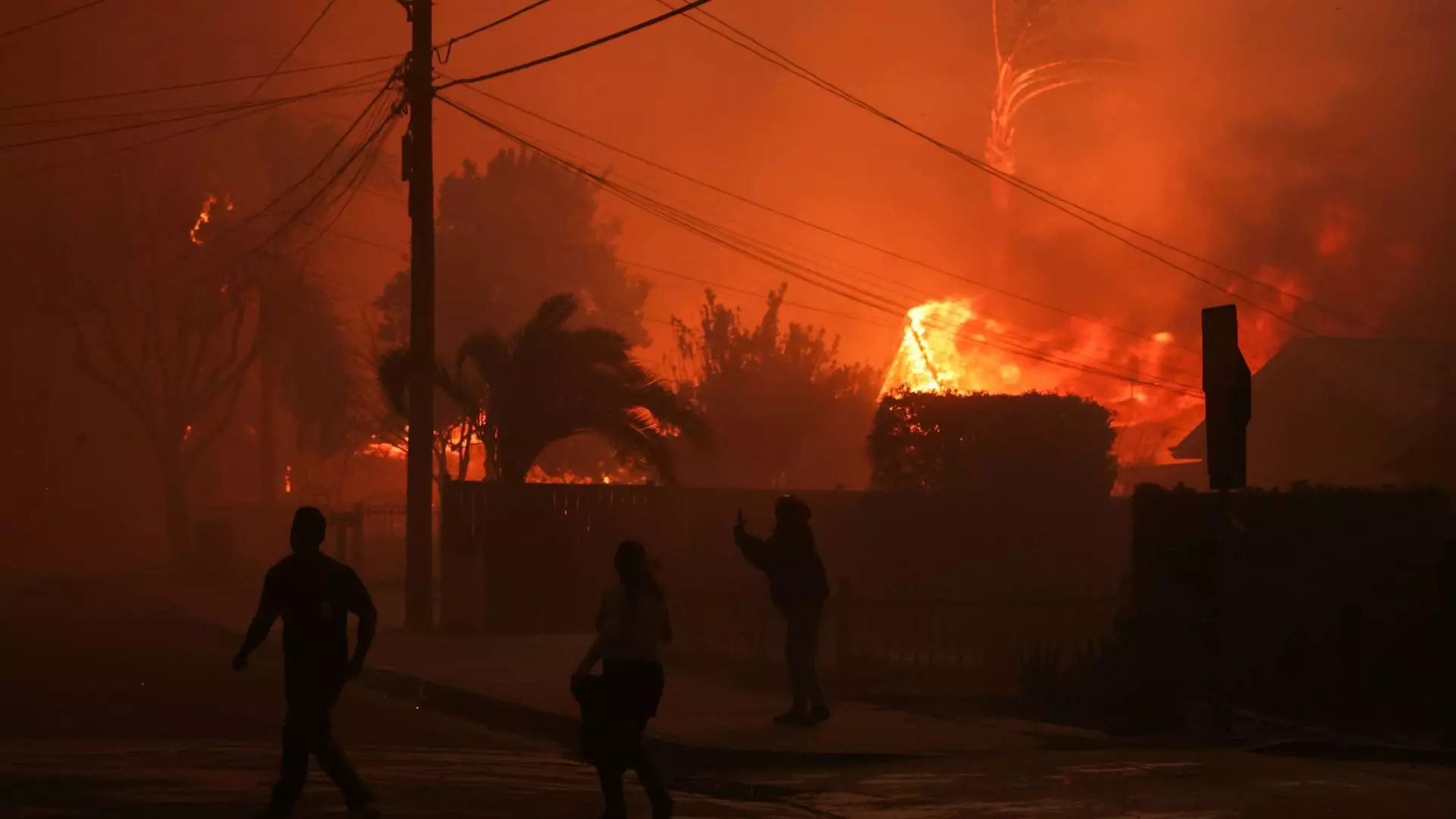California is once again grappling with devastating wildfires, particularly in areas near Los Angeles. The ongoing crisis has reverberated across various sectors, most notably impacting utility companies that operate within the fire-prone regions. Southern California Edison, owned by Edison International, is feeling the brunt of investor concern as it grapples with a significant drop in stock value. As flames rage and conditions worsen, a palpable sense of fear and uncertainty has enveloped not only the affected residents but also the financial markets.
Market Reaction and Investor Sentiment
Recent developments have resulted in a staggering 12% plummet in Edison International’s share price, reflecting a pronounced anxiety among investors. This decline is indicative of a broader sell-off mindset that is typical in scenarios where risk perception escalates. With evacuation orders affecting tens of thousands and tragic reports of fatalities surfacing, the association of utility companies with wildfires raises alarm bells. It is crucial to note that while there have been previous instances linking power equipment to wildfires, no current evidence suggests that Edison has been implicated in the ignition of these recent outbreaks.
Financial analysts noted that while the company has not filed an Electric Service Incident Report (ESIR), there are concerns about the impact on its infrastructure and potential costs arising from the crises. As elucidated by Bank of America’s Ross Fowler, SCE is likely to incur expenses related to the effects of the fire, underscoring the financial strain utilities face amidst natural disasters.
The financial repercussions of wildfires on utility companies are historically significant. A prime example is Pacific Gas and Electric Company (PG&E), which, in 2019, declared bankruptcy primarily due to massive liability claims stemming from wildfire incidents. The grave consequences have prompted regulatory interventions, such as the passage of California’s AB 1054 law in 2020, which seeks to mitigate liability for utilities in future wildfire-related incidents. This legislative measure ostensibly aims to provide some level of reassurance for investors and stabilize the sector after the tumultuous events of previous years.
The distress experienced by Edison International is not an isolated phenomenon; it reflects a worrying trend among utility firms operating in California. Associated stocks, including those of PG&E and Sempra Energy, have also faced declines, with PG&E shares dropping 4% and Sempra’s down 3% on the same day. Sempra’s San Diego Gas & Electric (SDG&E) has proactively shut off power for safety, highlighting the extent to which utilities must navigate the dual challenges of providing service while safeguarding public safety.
In the wake of such crises, it is critical for utility companies to adopt robust risk management strategies. These may include enhanced infrastructure investments, improved communication with communities, and proactive measures designed to minimize future wildfire risks. Moreover, investor sentiment may take a turn for the better as confidence in legislative protections, such as AB 1054, begins to settle in. However, the volatility exhibited in market reactions serves as a persistent reminder of the inherent risks entwined with operating in wildfire-prone regions.
As we closely monitor the evolving situation, the ongoing discourse between utility companies, regulatory entities, and the investment community will be pivotal in shaping the future landscape of California’s electric utilities.

